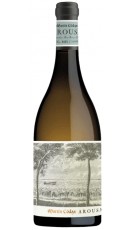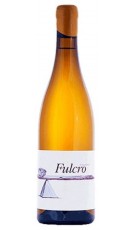
Galicia There are 215 products.
En el siglo XIV, Galicia exportaba esquejes a otros viñedos europeos. En el siglo XIX, toda la región sufrió una economía deprimida y muchos viñedos se abandonaron por la despoblación al emigrar los trabajadores. Los trabajadores de la vendimia gallega fu...
Catalog
-
Martín Códax Arousa 2021
White WineMARTÍN CÓDAXRías BaixasThe wine is born from a careful selection of plots caressed by the sea, in the area of San Tomé in Cambados. Vineyards that grow at the mouth of the Umia, cultivated by winegrowers with a...
Reduced price!In stock -
Aliaxe Tinto 2020
Red Wine.BODEGAS FULCRORías BaixasAliaxe is the first red produced by Bodegas Fulcro. The autochthonous varieties that are used are Caiño, Espadeiro and Loureiro from vineyards regulated under the D.O. Rias Baixas. Made from...
Reduced price! -
O Equilibrio 2023
White Wine.BODEGAS FULCRORías BaixasO Equilibrio is a single-varietal Albariño white wine from Finca A Xesteira, one kilometer from the island of Ons, in Sanxenxo. Its 11-month aging in barrels brings complexity and a palette...
Reduced price! -
A Pedreira 2022
White Wine.BODEGAS FULCRORías BaixasA Pedreira is a monovarietal Albariño from the Salnés sub-zone. On the nose it is intense, mineral, with citrus and green apple notes. On the palate it is creamy, very fresh and with...
Reduced price! -
Mar de Frades Brut Nature
Brut Nature.RAMÓN BILBAORías BaixasMar de Frades Brut Nature, the first sparkling Albariño made with 100% Albariño.
Reduced price! -
Mar de Frades Finca Valiñas...
White wine.RAMÓN BILBAORías BaixasThe grapes come from the Valiñas Estate, which was planted more than 30 years ago. All the grapes are selected by hand in the winery, a key aspect for quality. All Mar de Frades references...
Reduced price! -
Mar de Frades Albariño 2023
White wine.RAMÓN BILBAORías BaixasMar de Frades Albariño is a wine that envelops with its freshness and body, creating a balance between delicate elegance and attractive volume. The wine that invites you to live in blue...
Reduced price!In stock -
Zárate El Palomar 2022
White WineBODEGAS ZÁRATERías BaixasEl Palomar is the oldest plot of hundred-year-old Albariño vines in the Rías Baixas. Its mineral character comes from the very roots of the vines that penetrate the rock. A great aged...
Reduced price! -
Zárate Tras da Viña Blanco...
White WineBODEGAS ZÁRATERías BaixasPago Tras da Viña is a south-facing plot with deep soil rich in organic matter. It is on a plot of high yields, a wine with a completely unique character is not produced. Very complex.
Reduced price!

En el siglo XIV, Galicia exportaba esquejes a otros viñedos europeos. En el siglo XIX, toda la región sufrió una economía deprimida y muchos viñedos se abandonaron por la despoblación al emigrar los trabajadores. Los trabajadores de la vendimia gallega fueron en parte los que contribuyeron con su labor a desarrollar los viñedos en bancales de la región del vino de Oporto del Duero. Cuando España entró a formar parte de la Unión Europea en 1985, comenzaron a llegar fondos a Galicia que ayudaron al resurgimiento de la industria vitivinícola.

(+34) 91 129 11 11
(+34) 638 458 218
- Brandy
- Cognac
- Gin Premium
- Ron
- Whisky
- Denomination of Origin
- Winery






























